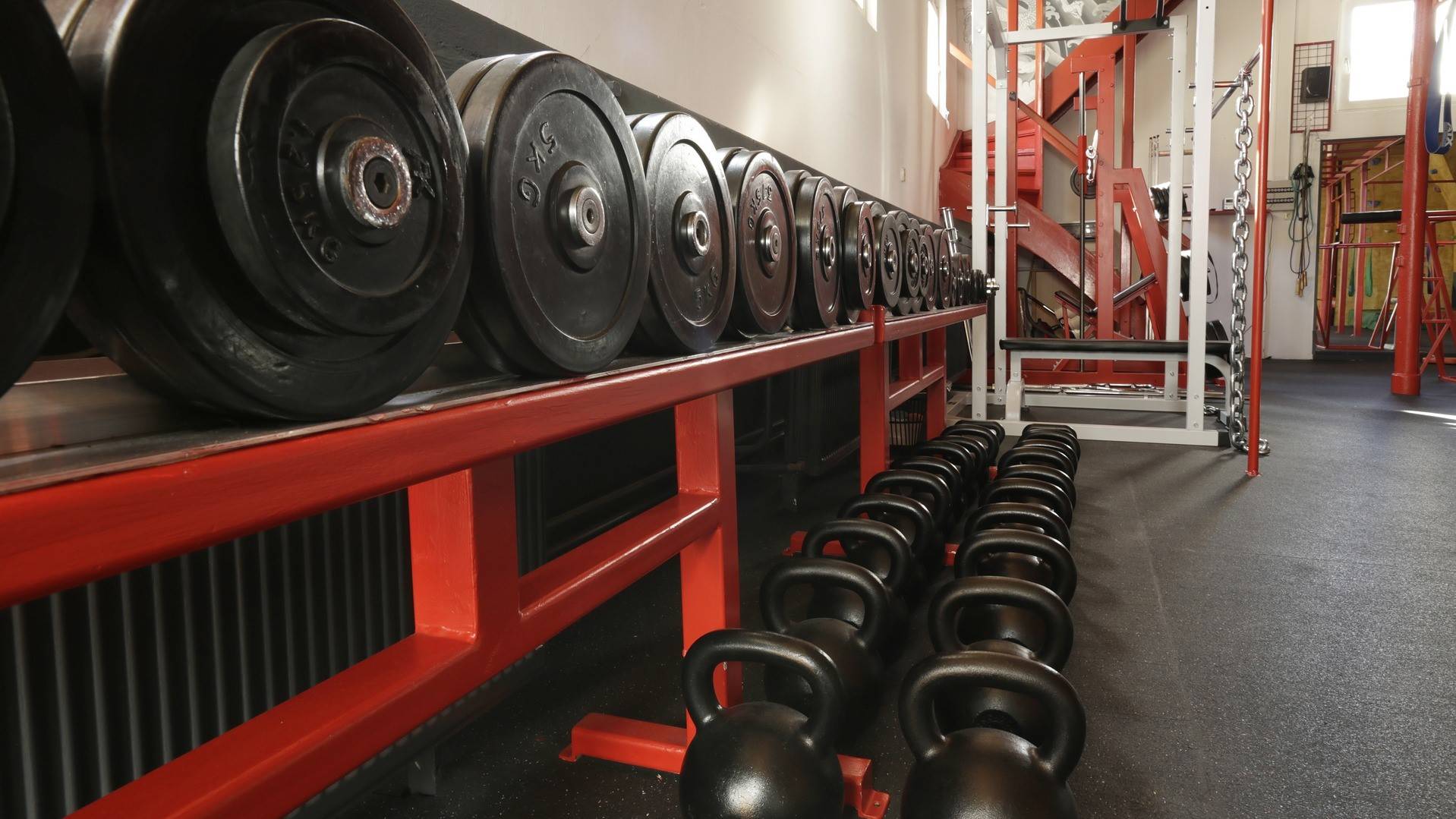Besonders wenn nach der Saisonpause wieder mit dem Training begonnen wird, sollte Krafttraining mit ganz oben auf der Liste stehen. In diesem Artikel findet ihr die 10 besten Übungen für das Krafttraining die möglichst effektiv und gut für Triathleten geeignet sind. Bei jeder Übung steht welche Muskelgruppe trainiert wird, wie euch diese beim Triathlon hilft und worauf ihr achten müsst.
Grundsätzliche Ausführungshinweise:
Beim Training mit Geräten solltet ihr euch zuerst einmal eine Einführung geben lassen. Seid ihr etwas erfahrener, solltet ihr trotzdem eure Ausführung selbst kontrollieren. Eure Gelenke sollten immer mit den Drehachsen der Geräte übereinstimmen und alle Bewegungen immer langsam und ohne Schwung absolviert werden. Auch die Rumpfmuskulatur sollte durchgehend zur Stabilisation angespannt sein und Pressatmung durch richtiges Atmen (beim anstrengenden Teil ein- und bei der Rückkehr in die Ausgangsstellung ausatmen) vermieden werden. Wiederholungszahl und Gewichte sind je nach gewünschtem Trainingseffekt zu wählen.
Übung 1 - Hüftadduktion
Muskelgruppe: Adduktoren der Beine
Diese Muskeln gehören zu den schwächeren Muskeln im Bereich der Oberschenkel. Die Stärkung dieser ist deswegen umso wichtiger, da sie den sauberen Tritt auf dem Rad stützen und für stabilen Lauf verantwortlich sind.
Wichtig: Nutzt eine Einstiegshilfe, positioniert die Polster etwas oberhalb der Kniegelenke und haltet während der kompletten Bewegungsausführung Rückenkontakt mit der Lehne.
Übung 2 - Kniestrecker sitzend
Muskelgruppe: Beinstreckmuskulatur (M. Quadriceps femoris)
Durch Training dieser Muskeln erlangt ihr mehr Kraft für bergige Radstrecken und einen allgemeinen, kräftigeren Tritt.
Wichtig: Position des Kniegelenks zum Gerät beachten, Stabilisation erfolgt durch einen leichten Zug an den Haltegriffen und Überstreckung des Kniegelenks vermeiden.
Übung 3 - Kniebeuger liegend
Muskelgruppe: Beinbeugemuskulatur (u.a. M. Biceps femoris)
Bei dieser Übung wird die Gegenmuskulatur zur vorherigen Übung angesteuert. Die hintere Oberschenkelmuskulatur ist für Hüftstreckung mitverantwortlich und der Beinbeuger verbessert eine effektive Laufbewegung.
Wichtig: Die Polster unmittelbar oberhalb des Knöchels positionieren, Körperkontakt mit der Liegefläche halten und Hohlkreuz vermeiden. Zieht eure Zehenspitzen etwas an und vermeidet eine Überstreckung des Kniegelenks.
Übung 4 - Beinpresse
Muskelgruppe: komplette Beinmuskulatur
Bei dieser Übung wird kein Muskel ausgelassen, weswegen entsprechend die Kraft eurer Beine für Laufen und Radfahren verbessert wird.
Wichtig: Stellt eure Füße hüftbreit und parallel oder etwas nach außen gedreht auf die Platte. Vermeidet eine vollständige Streckung der Kniegelenke und führt die Knie auf eine Linie zwischen Füßen und Hüfte.
Übung 5 - Butterfly
Muskelgruppe: Brustmuskulatur (M. Pectoralis major)
Diese Muskeln sind am Nachvorne- und Zurückführen des Armes und für die Innenrotation beteiligt. Deswegen sind sie essentiell für die Schwimmbewegung und das Training verbessert die Effektivität des Kraul-Armzugs.
Wichtig: Nutzt eine Einstiegshilfe und positioniert eure Oberarme etwa auf Schulterhöhe. Die Arme werden nur soweit zurückgeführt, bis sie eine Linie mit der Schulterachse bilden.
Übung 6 - Schulter Abduktion
Muskelgruppe: Schultermuskulatur (M. deltoideus)
Dieser Muskeln spannt sich über das gesamte Schultergelenk, gibt ihm Halt und ist an allen Bewegungen der Schulter beteiligt. Daher ist das Training essentiell für einen kraftvollen Kraularmzug.
Wichtig: Positioniert eure Schultergelenke korrekt zum Gerät und führt die Polster nur auf maximal Schulterhöhe. Die Schultern bleiben außerdem in neutraler Position (nicht nach oben ziehen) und wählt das Gewicht nicht zu hoch.
Übung 7 - Rudern
Muskelgruppe: Obere Rückenmuskulatur
Das Rudern beansprucht zahlreiche verschiedene Muskeln und ist eine gute Ausgleichsübung für die aerodynamische Haltung auf dem Rennrad. Wichtig: Oberkörper am Brustpolster stabilisieren und Griffposition etwas unterhalb der Schulterhöhe wählen. Haltet den Rücken gerade und vermeidet Ausgleichsbewegungen in der Lenden- und Halswirbelsäule.
Übung 8 - Dips
Muskelgruppe: Armstrecker (M. Triceps brachii)
Durch Dips verbessert ihr die Effektivität der Arme beim Kraulschwimmen.
Wichtig: Die Hände in der Ausgangsposition etwas unterhalb der Schultern halten und Ellbogen leicht nach hinten/außen abspreizen. Die Handgelenke bleiben stabil und Ellbogen werden nicht vollständig gestreckt oder überstreckt.
Übung 9 - Bizepscurls
Muskelgruppe: Armbeuger (u.a. M. Biceps brachii)
Falls ihr Probleme beim Schwimmzug habt, euren Ellbogen unter Wasser “stehen zu lassen” ist diese Übung gut für euch, da sie euch Kraft gibt für ein möglichst frühes Beugen der Ellbogen beim Kraularmzug.
Wichtig: Auch hier wieder auf die korrekte Position der Ellbogengelenke zur Geräte-Drehachse achten und legt eure Oberarme parallel auf die Unterlage. Die Handgelenke bleiben immer in Verlängerung des Unterarms und die Oberarme sollten mindestens um 90° gebeugt werden. Auch hier die Schultern wieder nicht hochziehen und Ellbogen nicht Überstrecken.
Übung 10 - Latzug
Muskelgruppe: Obere Rückenmuskulatur (u.a. M. Latissimus dorsi)
Durch diese Übung erhaltet ihr Stabilität in allen Disziplinen. Auch euer Armzug beim Kraulschwimmen wird verbessert und das kräftige Ausatmen unterstützt.
Wichtig: Spannt bei der Durchführung dieser Übung eure Rumpfmuskulatur an und haltet den Rücken gerade. Die Stange sollte etwas über Schulterbreite gegriffen werden und die Blickrichtung nach vorne ausgerichtet sein. Auch hier wieder Schultern neutral halten und nicht nach oben ziehen.





















1 Kommentar
Udo Zwicklinski
Hallo,ich bin 85 Jahre und trainiere noch 3 mal pro woche je 75 -120 min. am Kraft-Turm Die Übungen die hier gezeigt werden habe ich bis auf die Beinpresse alle im Programm.Slnd hervorragend zum Training geeignet.Allerdings trainiere ich heute nur noch zum Muskelerhalt mit bis zu 65kg.Es wäre nett wenn Sie weitere Vorschläge zum
Krafttrainig am Kraft-Turm hätten.LG UZ